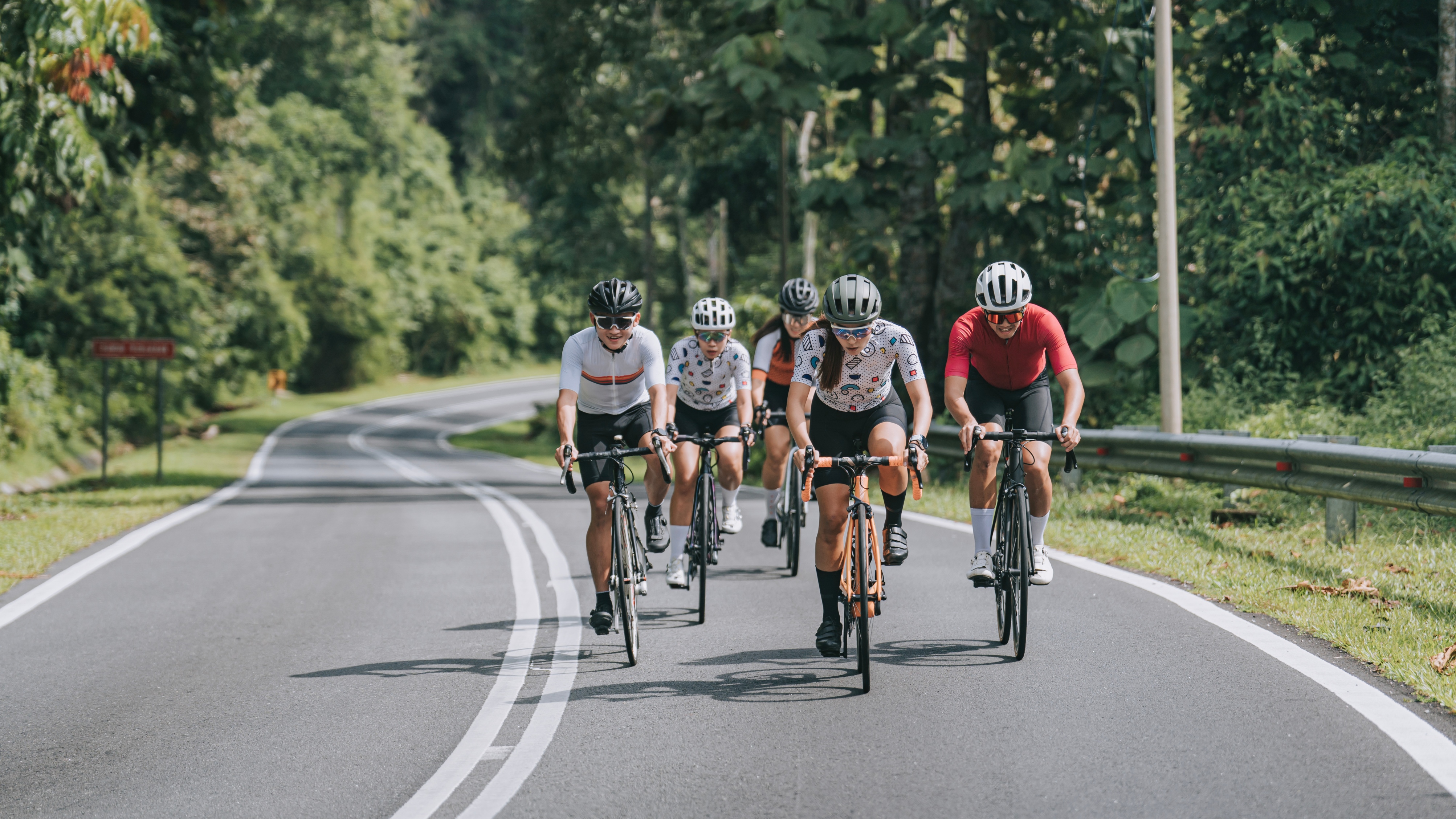
This article is part of a series called ‘A love letter to…’, where Cycling Weekly writers pour praise on their favourite cycling items (or, people) and share the personal connection they have with them. The below content is unfiltered, authentic and has not been paid for.
“Change for one!” comes the call, from somewhere in the middle of a tightly packed micro peloton. Legs wailing, lungs ignited, I grimace, keep my eyes resolutely focused on the lower back in front of me, and push harder on the pedals. The last thing my body wants is to feel the cool air at the front of the bunch - but - that’s the direction of travel in this eternally moving congregation on wheels, and to deny the design is to see the ornate tessellation fall apart.
Chaingang - In a chaingang formation, riders cycle in two parallel lines. When their 'turn' is over, a rider at the front of the group will move to the side, allowing the rest of the group to move through; the closer a rider is to the front, the less benefit they have from drafting, meaning they face greater resistance. "Change for one!" indicates that it's time for a change at the front.
Paceline - In a paceline, riders cycle in one line. When their 'turn' is over, the front rider will pull off, and drift to the rear, where they rejoin.
This is not your traditional love letter; it’s more a love-hate letter. Because, in that moment, all I wanted to scream back was “you change for one!”, followed by several expletives which could get me fired if penned in this space. But, when I grasped that Team Series Top-10 I’d been aching for, and broke away to win the weekend crit later that season, I was grateful.
Of course, this is a rearward looking love letter, too. Because those days have passed. Now, I’ll merrily leave the club run sergeant to patrol a new generation, whilst I waltz off with friends to explore the Sussex Downs (until, perhaps, post the front-line parenting days, I become the Saturday peloton marshal). For now, I’m comfortably satisfied with the brief, albeit very amateur and unimpressive (to anyone but my parents), winning moments I enjoyed - and - I put a lot of them down to the infuriating metronome that was the club-run-bore.
“Keep pedalling at the front!”, on the descents which could have been a welcome, freewheeling luxury, “close that gap!” when that half-a-wheel space opened up amid a microsecond of weakness, “don’t brake on the corner!!” in that moment of panic that I’d hoped would go unnoticed if I tapped the lever softly enough; none of it welcome in the moment, but all of it worthwhile.
Nobody wants to be told to go harder, when their heart rate is already nudging the 190bpm threshold of a 205bpm max. But, nobody ever got faster without leaning on the boundaries of comfort and sanity, and - certainly for me - it’s always been easier to surpass my self-imposed limits on the wheel of another than alone in a sweaty basement on a static turbo trainer.
Of course, there are situations where the club-run-bore must modify their behaviour. Shouting “change for one!” and expecting an excitable rabble of undrilled, beginner riders to conform - for example - is a sure fire way to see half of them injured and the other half silently vowing never to return. This is a situation where gentle encouragement, kindness and breezy conversation go a long way. The most successful cycling club outfits recognise that the cycling-club-bore is not a one-size fits all personality, and have personas to suit a plethora of situations and needs as diverse as their intended membership.
There has been, in recent years, something of a divergence from this traditional cycling club organisation, complete with club-run-bore. More, bunches of mates meeting as a product of loosely agreed WhatsApp exchanges, a shunning of the discipline of two neat lines, constitutions and club accountant roles. The result is a freedom which affords a great joy in simply riding bikes, it’s probably where my mindset is now, and it suits a more relaxed and agile approach to riding bikes.
In an ideal world, there’s room for all; the supportive beginner’s group where there’s always time to stop and return a chain to its rightful position, the group of mates after a ‘for the hell of it’ tear-up, and the “change for one!” roar of the club run commander. For the sake of the would-be racers and future of domestic competition, I hope the club-run-bore maintains his or her position as a priceless presence among the ranks. I, for one, would have been a lesser rider without them.







